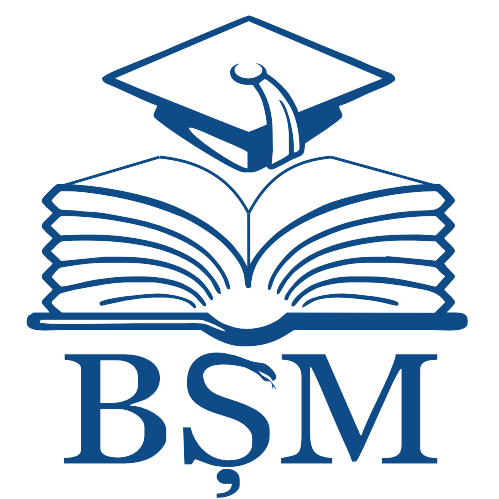|
|
- IRMS - Nicolae Testemitanu SUMPh
- 1. COLECȚIA INSTITUȚIONALĂ
- MATERIALE ALE CONFERINȚELOR ȘTIINȚIFICE
- Probleme actuale ale morfologiei. Conferință științifică internațională dedicată aniversării a 80 de ani de la fondarea Universității de Stat de Medicină și Farmacie „Nicolae Testemițanu” din Republica Moldova. Chișinău, 17-18 octombrie, 2025
- Probleme actuale ale morfologiei. Materialele Conferinței științifice internaționale dedicată aniversării a 80 de ani de la fondarea Universității de Stat de Medicină și Farmacie „Nicolae Testemițanu” din Republica Moldova. Chișinău, 17-18 octombrie, 2025
Please use this identifier to cite or link to this item:
http://hdl.handle.net/20.500.12710/31435
| Title: | Anatomy of ileocecal junction in prefetal period of ontogenesis |
| Authors: | Kryvetskiy, V.V.
Proniaiev, D.V.
Antoniuc, O.P.
Yemelianenco, N.R. |
| Issue Date: | 2025 |
| Publisher: | Instituţia Publică Universitatea de Stat de Medicină şi Farmacie „Nicolae Testemiţanu” din Republica Moldova |
| Citation: | KRYVETSKIY, V.V.; D.V. PRONIAIEV; O.P. ANTONIUC and N.R. YEMELIANENCO. Anatomy of ileocecal junction in prefetal period of ontogenesis. In: Probleme actuale ale morfologiei. Materialele Conferinței științifice internaționale dedicată aniversării a 80 de ani de la fondarea Universității de Stat de Medicină și Farmacie „Nicolae Testemițanu” din Republica Moldova. Chișinău, 17-18 octombrie, 2025 (sub red. Ilia Catereniuc). Chișinău, 2025, pp. 160-165. |
| Abstract: | Introduction
Modern medicine requires accurate information about age-related anatomical variability of human organs and
systems. The influence of perinatal disorders on the development of systemic diseases of internal organs in children
is well known.
A significant rate of developmental disorders occurs in the large intestine, particularly in the ileocecal segment.
The aim of the study
To study the formation, structure and specific features of the ileocecal segment and adjacent anatomical structures
in the prenatal period of human ontogenesis.
Material and methods
The study was conducted on 25 preparations of human embryos.
The work combined the complexes of modern and classic morphological and morphostatistical methods with an
assessment of the reliability of the results obtained, which involves the production and study of a series of consecutive
histological and topographic-anatomical sections, morphometry, three-dimensional computer reconstruction.
Results of research
Significant changes in the morphology of the intestinal wall were observed in 7-week-old embryos: epithelial
cells lost their connection with the basal membrane, recanalization of the intestinal lumen was observed, but the
epithelium retained its stratification, “epithelial membranes” were formed.
This period of development can be considered critical, since under the possible influence of teratogenic factors,
the process of restoration of the lumen may be disturbed, which will subsequently lead to atresia of the proximal and/
or distal parts of the intestine.
At the end of the 8th week of development, a change in the topography of the large intestine was observed in the
cranial part of the intestine, which becomed more curved, and from the sagittal plane it turned almost horizontally
under the visceral surface of the liver.
In fetuses of the 9th week of development (31.0-41.0 mm PCL), the dimensions of the lateral protrusion of the
enlarged intestine change: its length was 3220±40 μm, and its width was 2000±10 μm.
The proximal part of the lateral protrusion had a cone–like shape, the distal part was cylindrical.
The vermiform appendix was a continuation of the primary cecum, its base can have a variety of positions in a
newborn. If the lower end of the cecum is directed laterally, then the beginning of the appendix is on its lateral surface
and may be adjacent to the kidney and/or liver.
Conclusions
1. We appropriate to consider the seventh weeks of intrauterine development as a critical period, due to the
significant intensity of morphological changes in its structural components: recanalization of the lumen, the laying of
villi and the circular muscle layer of the intestine, the disappearance of the physiological hernia.
2. Visually, the segment of the transition of the small intestine into the large intestine appears in the eighth weeks
of intrauterine development.
3. According to our observations, it is the ileocecal segment of the intestine that leaves the physiological hernia
last. |
| metadata.dc.relation.ispartof: | Probleme actuale ale morfologiei. Conferință științifică internațională dedicată aniversării a 80 de ani de la fondarea Universității de Stat de Medicină și Farmacie „Nicolae Testemițanu” din Republica Moldova. Chișinău, 17-18 octombrie, 2025 |
| URI: | https://repository.usmf.md/handle/20.500.12710/31435 |
| Appears in Collections: | Probleme actuale ale morfologiei. Materialele Conferinței științifice internaționale dedicată aniversării a 80 de ani de la fondarea Universității de Stat de Medicină și Farmacie „Nicolae Testemițanu” din Republica Moldova. Chișinău, 17-18 octombrie, 2025
|
Items in DSpace are protected by copyright, with all rights reserved, unless otherwise indicated.
|


